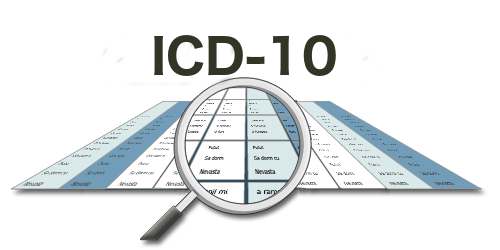Understanding Sleep Apnea Coding: A Comprehensive Guide to ICD-10
Introduction:myrespco.com
Sleep apnea is a common sleep disorder characterized by pauses in breathing or instances of shallow or infrequent breathing during sleep. It can lead to disrupted sleep patterns, reduced oxygen flow to vital organs, and various health issues. In the context of medical coding, the International Classification of Diseases, 10th Edition (ICD-10), provides specific codes to accurately document and classify sleep apnea cases. This article aims to shed light on ICD-10 coding for sleep apnea, facilitating a better understanding for healthcare professionals, coders, and those involved in medical documentation.
ICD-10 Codes for Sleep Apnea:
The primary ICD-10 codes associated with sleep apnea fall under the category of "Sleep Disorders" (codes G47.3-G47.9). Here are some key codes related to sleep apnea:
-
G47.30 - Sleep Apnea, Unspecified:
- This code is used when the specific type of sleep apnea is not identified or when documentation is insufficient to assign a more detailed code.
-
G47.31 - Obstructive Sleep Apnea (OSA):
- OSA is the most common type of sleep apnea and occurs when the muscles at the back of the throat relax excessively, causing an obstruction in the airway.
-
G47.33 - Complex Sleep Apnea Syndrome:
- This code is used for cases where a patient exhibits a combination of obstructive and central sleep apnea patterns.
-
G47.39 - Other Sleep Apnea:
- This code is applied when the specific type of sleep apnea is documented, but it does not fall into the categories mentioned above.
Documentation Tips for Accurate Coding:
-
Clinical Specificity:
- Ensure that the medical record includes specific details regarding the type of sleep apnea, such as whether it is obstructive, central, or a combination (complex sleep apnea syndrome).
-
Severity of Sleep Apnea:
- Document the severity of sleep apnea, as it may impact the choice of code. This could include mild, moderate, or severe, often based on the Apnea-Hypopnea Index (AHI).
-
Underlying Conditions:
- Identify and document any underlying conditions contributing to or associated with sleep apnea, such as obesity, hypertension, or craniofacial abnormalities.
-
Comorbidities:
- Document any comorbidities that may be present, as they can affect the overall management and treatment plan for sleep apnea.
Conclusion:
Accurate coding of sleep apnea in accordance with ICD-10 is crucial for proper reimbursement, research, and overall healthcare management. It is essential for healthcare professionals and coders to work collaboratively, ensuring that medical documentation is thorough and specific. As the field of sleep medicine continues to evolve, staying informed about coding guidelines and updates is key to providing quality patient care and maintaining compliance with coding standards.
